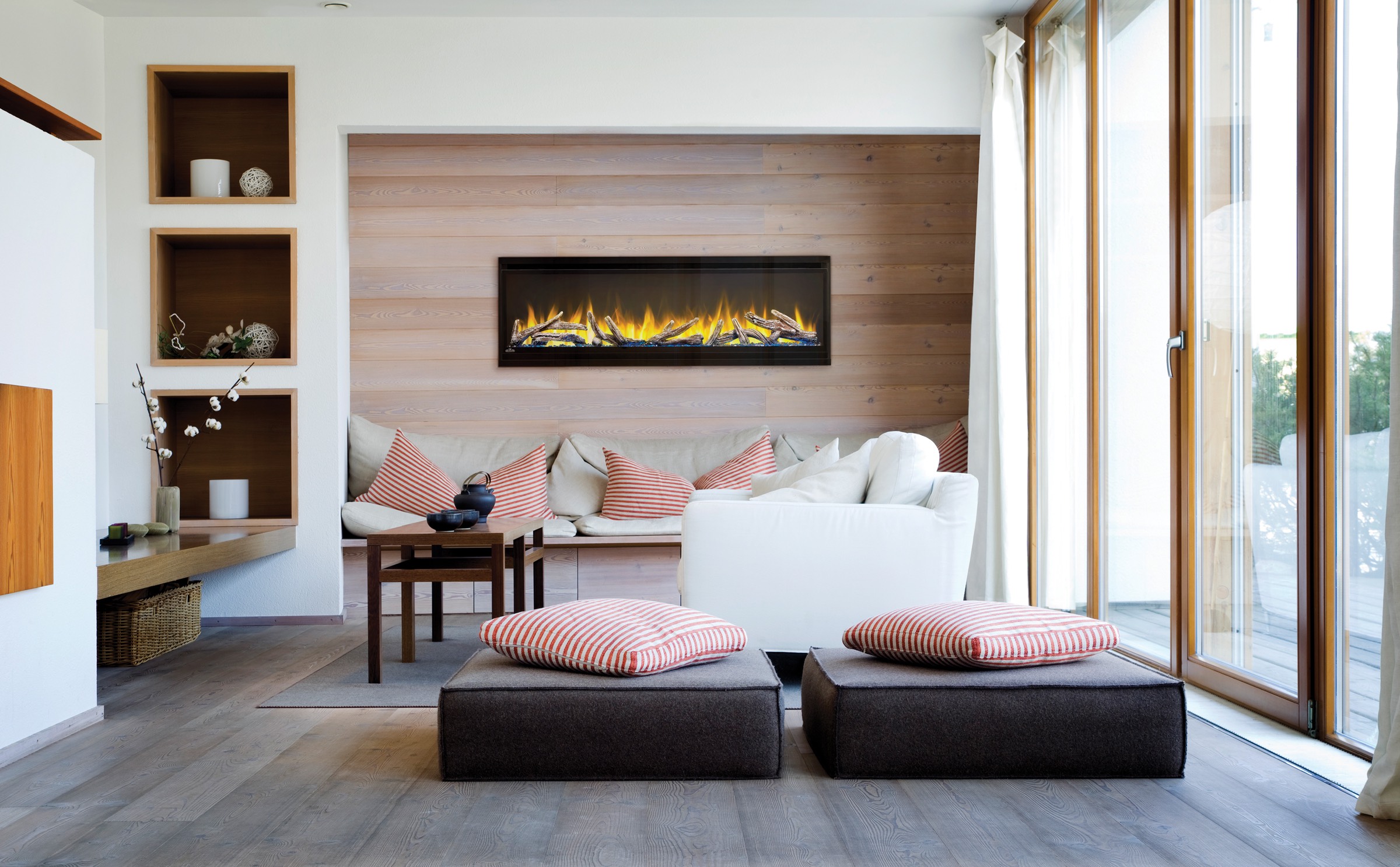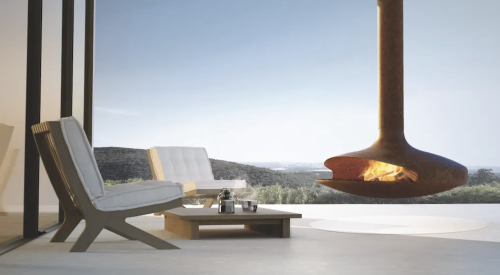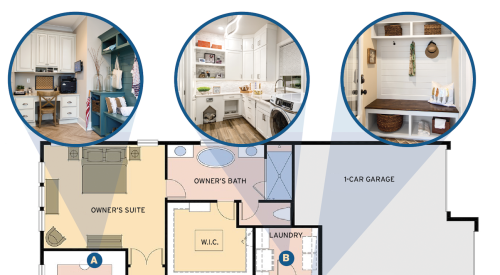Question: What types of fireplaces are you seeing the most demand for from end-users?
Napoleon: Over the past several years, especially in the digital age where people appreciate and often demand immediacy, consumer attitudes and preferences have leaned heavily toward gas fireplaces. The ease of use and odorless, mess-free operation make gas fireplaces extremely desirable. Most people would just prefer flipping a switch compared to fiddling with wood and kindling to start a fire the old fashioned way—plus, not having to clean up soot, ash and burned up logs is a huge benefit.
For many of the same reasons end-users are gravitating toward gas fireplaces, the popularity of electric fireplaces is also on the rise. Electric fireplaces are a great option for buildings that don’t allow traditional gas or wood units, creating the warmth and ambiance people love about fireplaces. Advancements in the design of electric fireplaces have progressed significantly in recent years, making them both more beautiful and versatile than ever before. With wall-mounted or built-in models, and even double-sided, see-through options, the ease of installation of electric fireplaces enables them to be used in unique spaces like bathrooms and kitchens where plumbing or other obstacles might be in the way. What’s more, the investment of installing an electric fireplace compared to wood or gas is greatly reduced as there is no need for venting components, which saves both time and money—potentially lowering the cost of the project by thousands of dollars.
Q: Is installing wood-burning fireplaces really more cost-effective for homebuilders than natural gas fireplaces?
Napoleon: There’s a big misconception in the building industry that cutting a hole and throwing in a wood unit is an inexpensive, easy way to check the buyer’s box of the inclusion of a fireplace. However, when you factor in the added expense to construct the necessary chimney, wood-burning fireplaces are typically not more cost-effective than natural gas. Not to mention the fact that the majority of homebuyers prefer gas fireplaces, so the installation of a wood fireplace could actually detract from their interest in the home.
.jpg)
Q: How does ease of installation differ between gas and wood-burning units?
Napoleon: The installation of gas units is typically much easier than wood-burning units. Because gas fireplaces burn cleanly, there is no need to build a chimney. Instead, the exhaust can simply be vented to an external wall or roof vent. When using flexible venting, which can bend and stretch to flow around walls and other obstacles, as opposed to traditional rigid venting, installation of gas fireplaces becomes even easier. Flex vent saves builders both time and money, and it is code compliant.
Q: In terms of the environment, how does the impact from natural gas fireplaces differ from wood-burning units?
Napoleon: Because natural gas is a relatively clean-burning fuel, especially when compared with wood-burning alternatives, gas fireplaces are much better for the environment. Wood smoke contributes to air pollution both indoors and out.
Q: How are government regulations impacting the discussion between wood versus gas fireplaces?
Napoleon: The government has become increasingly strict on emissions requirements for wood-burning heating appliances and some jurisdictions have even banned the installation of wood-burning units. Foreshadowing a change builders will most likely have to make anyhow, these regulations make gas units even more attractive.
.jpg)
Q: What design opportunities are there for natural gas fireplaces versus wood?
Napoleon: Given the necessity of a chimney, the potential installation locations of wood-burning fireplaces within the home are limited. Gas or electric fireplaces afford much more design flexibility in both the options for their physical locations and their aesthetics. For example, most wood-burning fireplaces are comprised of a standard square box, but gas and electric units are available in horizontal or linear designs, which has quickly become one of the most popular consumer fireplace preferences.
Additionally, several of Napoleon’s premium gas units in the Luxuria and Vector lines offer an industry-exclusive and patent pending Dynamic Heat Control System that redirects heat, leaving the unit cool to the touch and enabling televisions, electronics or artwork to be installed directly above them. The ease of installation of gas and electric fireplaces also allows them to be used in many locations throughout the home where it’s simply not possible to put a wood-burning unit with a chimney. What’s more, research shows the consumer’s perception of their contractor, builder, remodeler, designer or dealer increases when they showcase or include features such as fireplaces in multiple rooms.
Finally, gas and electric fireplaces also afford more design opportunities in terms of their appearance. With a variety of surrounds and insert panels available—from black or stainless to decorative brick—and media—from color-changing crystals to rocks or log sets—the options for customization are endless.
For more information about Napoleon Fireplaces and the products they offer, visit www.NapoleonFireplaces.com.












